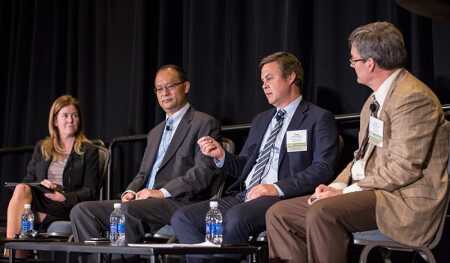The economic forecast for the next three years likely will be mixed, panelists said at the ULI Spring Meeting in Philadelphia, thanks to slowing productivity, job growth that is relegated primarily to low-wage sectors, and imbalances in real estate markets driven by shifting consumer preferences and incomes.
“It’s not going to be a down year, but it’s probably going to be flat,” said Anthony Charles of Morgan Stanley Real Estate Investing. “We’re certainly being more selective [in investing].”
Parts of the market look great on paper from a development perspective: job growth will likely continue at an above-average pace for the next three years, and office and apartment vacancy rates are at their lowest levels in years.
But there are just as many reasons to go easy on bullish market chatter. The retail sector has been volatile, single-family housing starts are unlikely to crack 1 million over the next three years nationally, and the U.S. population is aging and growing more slowly. It remains unclear whether low vacancy rates are wholly positive: for apartments, it may reflect deferred home purchases tied to rising housing costs relative to incomes.
“There’s a mismatch between where people want to live and what they can afford right now,” said Suzanne Mulvee, an analyst from the CoStar Group.
All is not gloomy. Industrial performance has been strong, and there is an opportunity to capitalize on shifts from suburban to urban markets.
“The consumer and housing markets are going to drive growth in years to come,” said Tim Wang of Clarion Partners “A lot of office space built in the ’70s and ’80s is obsolete. So you’re going to need a lot of capital.”
Slowing population growth could also buoy long-stagnant wages. And while broader growth may be down, some markets are flourishing.
“In urban locations, real wages have risen by 5 percent, while in the suburbs they’re down 8 percent,” said Mulvee.
This has led to flurry of construction in urban areas, leading to out-of-control housing costs and the frequent marketing of superficial so-called amenities in supposedly luxury rental units over actual housing quality to make up for spiraling rents.
How this will change in the years to come is unknown.
“The question is, will millennials move out to suburbs when they want to have kids and buy a house?” said Charles. “I think you’ll see urban nodes growing in suburbs; maybe the revitalization of inner-ring suburbs.”





